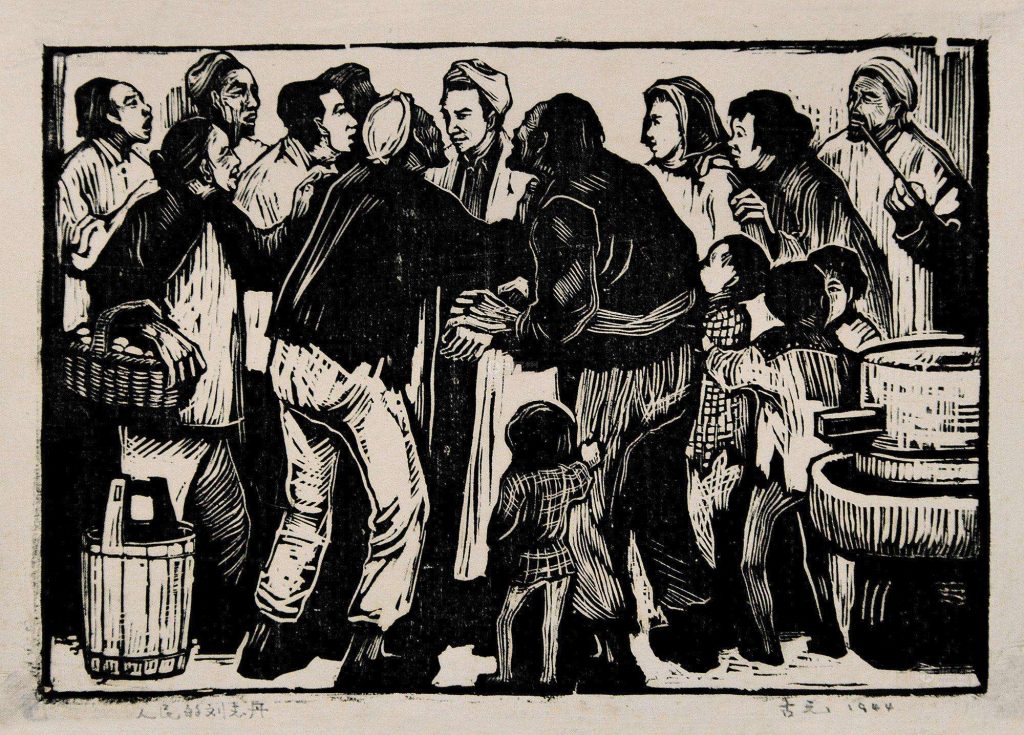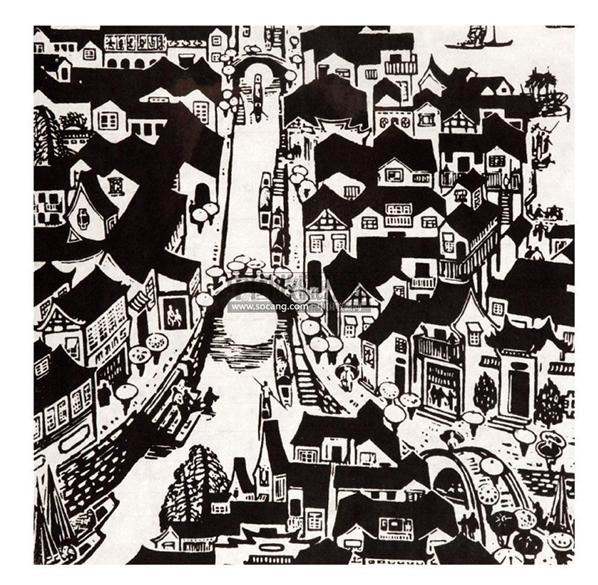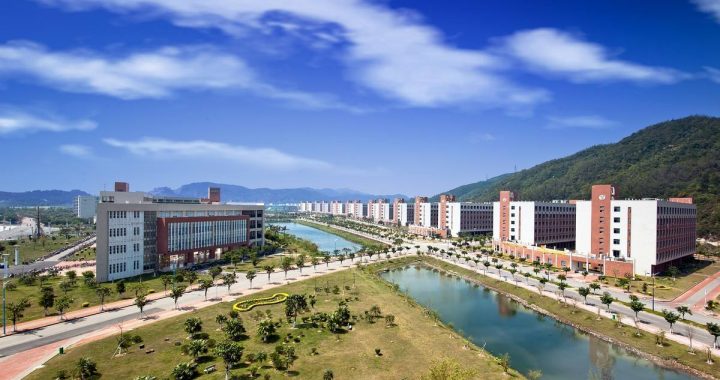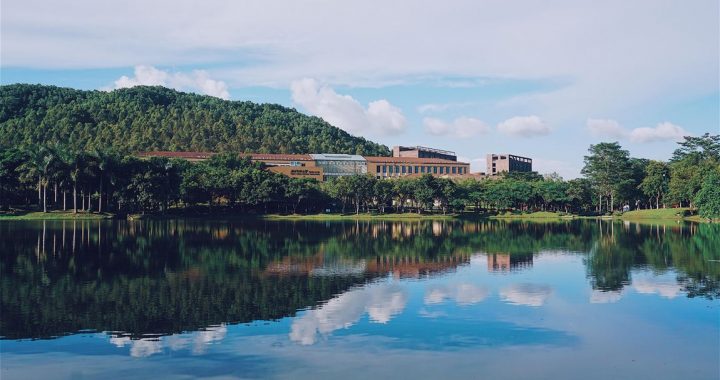Revolutionary Road
4 min readWoodblock Print Artist, Gu Yuan
Coast Gallery
In the summer of 1938, 19-year-old Gu Yuan saluted a secretary of the Guangzhou branch of the Eighth Route Army and set off on his “revolutionary road”taking him to Yan’an, the “red heart”of the country. Diving into the struggle to win the war, the all-encompassing, anti-Japanese atmosphere in Yan’an inspired the young man, urging him to reach the limits of his creativity as an artist every day. Willing to help in any way he could, he became involved in all sorts of activities-making murals, designing wall newspapers, writing revolutionary slogans, and trying woodblock prints for the first time, never suspecting that this last specialty would become his artistic focus and passion for the rest of his life. The solid foundation laid by the daily paint-from-life practice in his younger years soon brought him into the newly-established Lu Xun Academy of Literature and Arts in Yan’an, a wartime creation of Mao Zedong that cultivated a seminal group of artists for China at a time of famine entangled with gunsmoke and mortal combat. Gu Yuan was, from the start, one of the moving forces at the school.

Due to a serious lack of painting materials in Yan’an, Gu Yuan turned to sharp knives and blocks of wood to vent his artistic passion. Scarcity, instead of being a barrier, was an impetus of creativity; and the duplicability of woodcuts also made this art form ideal for anti-Japanese publicity.
After graduation from the school, Gu Yuan threw himself into the challenging but exhilarating life of the “jiefangqu” (liberated areas). The first stop on his “art expedition”was Nianzhuang, in Chuankou, Yan’an, where living in cave dwellings with the villagers was quite an experience for the young man. Dying to practice what he had learned, Gu Yuan volunteered to be the village’s culture teacher and secretary. He made printed pictures, using livestock as the running theme, for the village’s anti-illiteracy campaign. The villagers quickly adapted to their new cultural life, learning to read basic characters such as “cattle””horse” and “sheep”, and loving the pictures so much that they took them home to share.

As trust and appreciation grew, communicati deepened, moving Gu Yuan toward new perceptions and sensitivities, even a new, shared language of images that brought him to the first peak in his art life. More often than not, Gu Yuan got unrestrained approval from the villagers. But his art style matured and grew even more distinctive with the villagers’ straightforwar and outspoken criticism of the mistakes he made in his”farmer life” creations.
Gu Yuan(1919-1996)
Born in Nazhou Village, Tangjiawan in Zhuhai An outstanding representative of the “Yan’an-style’ woodblock print art of China.

Everyday routine sights took on deeper meaning for Gu Yuan and he incorporated them into his unique repertoire of imagery, portraying, instance, two farmers engaged getting the fodder of the day ready.
“You know, a shepherd never sets off on a day’s work without taking a dog and carrying a jute bag in case of new lambs being born on the grazing site.
Everyday routine sights took on deeper meaning for Gu Yuan and he incorporated them into his unique repertoire of imagery portraying, for instance, two farmers engaged in getting the fodder of the day ready. The act of hoeing becomes a representative action in the style of the artist’s “revolutionary era”, crystalizing into a charming combination of the fine and smooth Soviet woodprint aesthetics and the unvarnished paper-cutting technique used by people living in northwestern Shaanxi Province. The power of mannual workers is vividly brought out by the masculine tension bulging underneath the sleeveless shirt. In the distance, a child sits adoringly with a donkey, whose docile eyes are filled to the brim with motherly affection.

“This is the first time I saw an artwork that presents the liberated area in such a peaceful, sweet way, so much so that feel my yearning to go there and take a look at the place that was so full of life; and it takes a lot more than skills to portray a scene through someone’s’ back,” Chinese ink painting master Xu Beihong said as he gazed into the woodcut piece for a long time at the national exhibition held in Chongqing in 1942. Xu was so impressed by the artistic flair of Gu Yuan that he bought the piece and later published an article to declare his discovery of “a rare genius in the artist circles of China”.
Critics have always noted the striking uniqueness of Gu Yuan’s woodcut works. “Down-to-earth” is the perfect adjective to describe the woodprint style of Gu Yuan. The cruelty of war and elemental struggle of human existence is expressed euphemistically-through the eyes and faces that contain rich emotion. The artist has always maintained placid attitude toward social wrangling in his own life and focused instead on the everyday life of ordinary people-their little blessings and annoyances, and the way they bear them patiently as they keep working-making his creations resonate at once with historic realities and timeless beauty.
In 1941, Gu Yuan was sworn in as the director of the art workshop of Lu Xun Academy of Literature and Arts in Yan’an. The period from 1941 to 1949 saw the artist furthering his “red motif” in diversity of styles. The decades after 1949 formed his “reminiscence period”, in which he released all his homesickness in a series of refreshing landscape works represented by The Banyan Tree and Fishing Girl.
Only a couple months after Gu Yuan donated many of his artworks and personal belongings to his hometown, the artist passed away.








